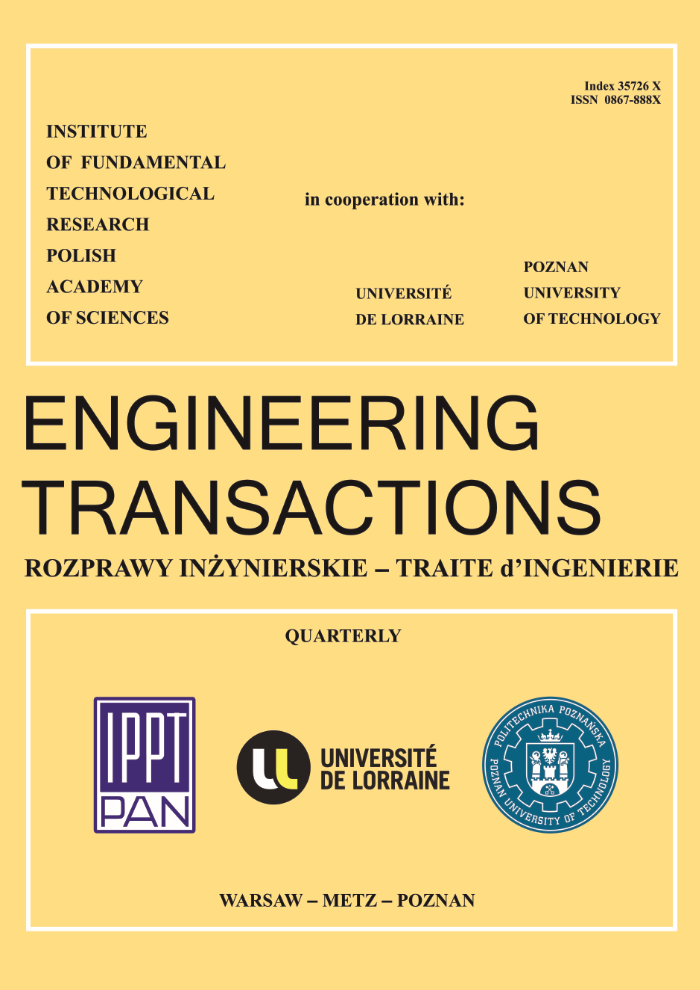Abstract
We present the numerical analysis of a series of cutting problems for a visco-plastic material. The model is implemented in a finite element program written in the flow formulation framework. Almost ideal plasticity is achieved as the limit case of a visco-plastic material. Solution dependence on the chosen initial configuration (the final one being not known) suggests non-uniqueness inherent to the visco-plastic material with free surfaces, since a residual rate dependence is conserved in the model.
References
H.PETRYK, Slip line field solutions for sliding contact, Proc. Inst. Mech. Engngs., Int. Conf. Tribology - Friction, Lubrication and Wear, Fifty Years On, II, 987-994, London 1987.
H.PETRYK, On the stability of non-uniquely defined processes of plastic deformations, J. Mechanique Théorique et Appliquée, 187-2021 spec. nr., 1982.
H.PETRYK, Non-unique slip-line field solutions for the wedge indentation problem, J. Mechanique Appliquée, 4, 3, 255-282, 1980.
O.C.ZIENKIEWICZ, Flow formulation for numerical solution of forming processes, [in:] Numerical Analysis of Forming Processes, J.F.PITMANN et al. [Eds.], Wiley 1984.
O.C..ZIENKIEWICZ, P.C.JAIN and E.ONATE, Flow of solids during forming and extrusion: some aspects of numerical solutions, Int. J. Solids' Structures, 14, 15-38, 1978.
H.J.ANTÚNEZ and S.R.IDELSOHN, Topics in numerical solution of isothermal and thermal-coupled forming processes, Latin American Applied Research, 20, 69-83, 1990.
R.HILL, On the state of stress in a plastic-rigid body at the yield point, Phil. Mag., 42, 868-875, 1951.
H.J.ANTÚNEZ, Análisis por elementos finitos del conformado de metales, con orientación a la laminación de tubos sin costura, Ph-D Dissertation, Universidad Nacional de Córdoba, Argentina 1990.


